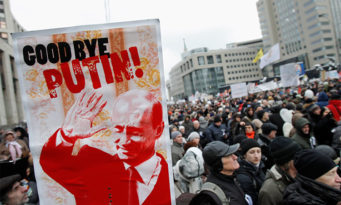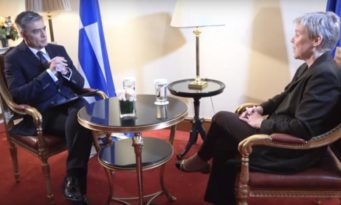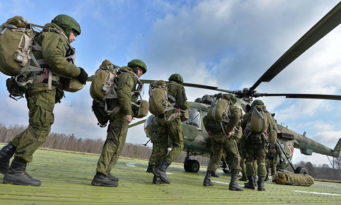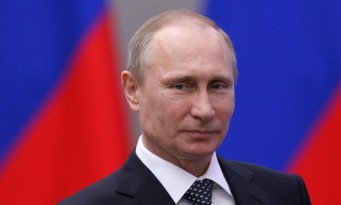Tartu or Piccadilly Circus? NATO, Russia and the logic of defence
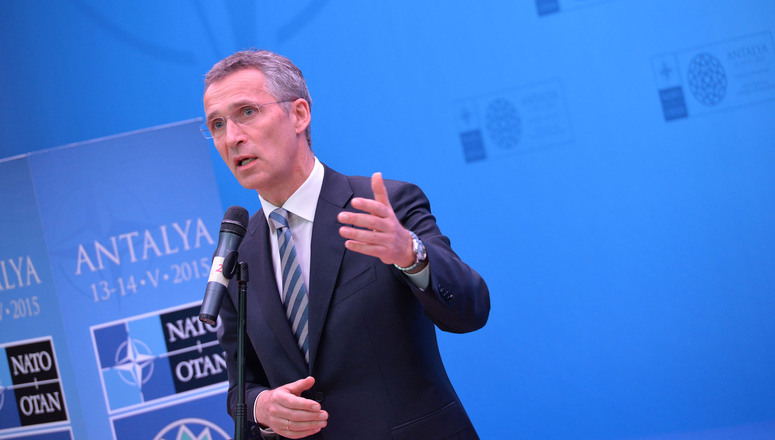
- By defencematters
At the meeting of NATO’s foreign minister in Antalya, Turkeythe Alliance called for closer cooperation with the European Union (EU), but also with the non-NATO EU members, Finland and Sweden
by Igor Merheim-Eyre
In the famous British political satire ‘Yes Prime Minister’, televised in the final decade of the Cold War, the fictional Prime Minister Jim Hacker is questioned by the Government’s chief scientific advisor on nuclear weapons on the ‘last resort’ in which he would press the ‘red button’ against the Soviet Union. Assured that the Soviet Union which, in 1985 miserably retreated from Afghanistan, would not invade Western Europe the advisor notes that the Soviets would most likely resort to ‘salami tactics’ (an older version of ‘hybrid warfare’, to which today’s defence analysts point to as if to some new discovery). Jim Hacker is given multiple options in order to decide what would be the ‘last resort’: Scenario 1: Riots in West Berlin; Eastern German fire service offers to help and crosses the border, followed by policemen and army, eventually replaced by Soviet troops. Would he press the ‘red button’? Of course not. Scenario 2: Soviet troops ‘accidentally’ manoeuvre across the West German border. A time for the ‘red button’? No, says Hacker. Scenario 3: Soviet troops march into Belgium, Holland, France, and station troops on the English Channel. Perhaps now Hacker must act before Britain is invaded? No, he says, to the ‘final resort’, because it would be suicidal.
At the meeting of NATO’s foreign minister in Antalya, Turkey, in the wake of on-going Russian involvement in Ukraine, the Alliance called for closer cooperation with the European Union (EU), but also with the non-NATO EU members, Finland and Sweden. Of course, calls for closer cooperation between NATO and the EU would be nothing new; it is an express wish of endless statements which, in the past quarter of a century it has seen very little substance on the ground. Creating the Common Security and Defence Policy as a European wing of NATO became a noble idea that never materialised, perhaps because European countries repeatedly fail to take responsibility for their own security.
For the Kremlin, which still sees the EU as an economic project rather than a security provider, this would hardly be a cause for concern. The increasing closer proximity between Sweden and Finland and the North Atlantic Alliance, on the other hand, is causing outbursts of angry commentary from the Russian government. The Russian Foreign Ministry expressed its dismay at a recent statement by the Finnish, Norwegian and Swedish defence ministers calling for closer defence cooperation as a result of Russia’s actions in Ukraine and increasing activity in the Baltics. No doubt with a great deal of irony, the MFA suggested that such steps are ‘confrontational’ and ‘contrary’ to a constructive dialogue needed in order to resolve the ‘internal conflict’ in Ukraine.
At the same time, this opens wider questions about the competing logics and, indeed, perceptions of defence on the European continent. NATO, for one, claims to be merely a defensive alliance. Indeed, except for out of area operations in the Balkans and in Afghanistan, the Alliance did not under-take any official role outside the territory of its member states. For Russia, however, the threat of NATO never came from its capability to strike or deploy out of area. It arose from a psychological insecurity of a widening security community, rather than its military might. Russia’s stance on NATO has not been a uniform one, but the fear of losing a ‘buffer zone’ between itself and the Alliance cause by NATO enlargement increasingly led to a self-justifying narrative that (re)turned NATO as a foe, which many Western commentators interpreted as NATO’s encroachment into Russia’s own ‘back yard’. For NATO, therefore, the logic of defence lies in tackling potential (in)securities to its members out of area (e.g Aghanistan), as well as institutionalising an ever-wider number of European states in its structures and, hence, providing peace and stability in the North Atlantic area through membership. For Russia, this ‘externalisation’ and ‘expansion’ are merely two sides of the same coin; not only encircling Russia, but increasingly dictating the terms of security on the European continent.
This presents a challenge for NATO. On one hand, Russia is aware that NATO’s strengthening of its eastern members is, militarily, insignificant. The Dragoon Ride, for example, may have provided an excellent opportunity for Twitter diplomacy, but it hardly provides a sufficient capability to tackle a ‘hybrid warfare’ and, thus, to defend eastern NATO. On the other hand, for hawks in the Kremlin, this equally provides excellent propaganda material that reinforces the view of an encroaching and encircling NATO, spurred by American aggression, destroying years of cooperation.
NATO’s member states, therefore, must get over this entrapment not merely to help diffuse the on-going war of words, but also to prepare itself for any possibility of a Russian ‘hybrid warfare’ spreading to the territories of its members. What then, is the ‘final resort’, the chief advisor asks Jim Hacker; Piccadilly Circus? Watford petrol station? In this case, he noted, it doesn’t matter, because the Soviets would never put the Western leader into a ‘final resort’ decision. ‘Salami tactics’, or ‘hybrid warfare’, works slice by slice, through small step, rather than a grand plan.
Creating large conventional forces on NATO’s flank will, therefore not deter Russia. Rather, it will serve to reinforce the Russian fears. What NATO, therefore, requires, as in the case of the Nordic countries, is a new logic of defence; a shift from military stockpiling on its flanks, and developing new measure to protect the most exposed members. Old fashioned deterrence will, therefore, no longer deter. In order to protect Tartu or Piccadilly Circus, NATO no longer needs grand armies or strategies on its eastern, northern or southern flanks. It needs quick and effective response, intelligence-sharing and, most importantly, an ambitious information strategy. The Alliance must also stop beating itself down about angering Russia. Instead, it must live up to the expectations of its members who, in turn, must be prepared to take on more responsibility for their own security.
Igor Merheim-Eyre is a PhD Candidate in International Relations at Kent University and an Assistant Lecturer in Introduction to International Politics and International History & International Relations, having previously held the position of Programme Coordinator at the Global Europe Centre.







